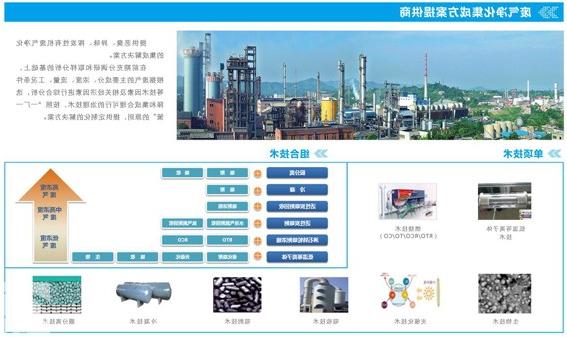
Provides integrated solutions for the purification of odor, odor and volatile organic waste gas。
On the basis of full investigation and sampling analysis in the early stage,According to the main components of the waste gas, concentration, flow, working conditions and other technical factors and related economic factors are comprehensively analyzed,Select and integrate reasonable and feasible governance technologies,In accordance with the principle of "one factory, one policy",Carry out corresponding process design,Form the corresponding project implementation plan。

The main governance technologies integrated:
l Low temperature plasma technologyUsing dielectric barrier discharge technology, it can produce low-temperature plasma with large volume, high energy density and high concentration of active particles at atmospheric pressure, which is suitable for the treatment of odor waste gas and low concentration, large flow and complex components VOCs。
l Adsorption technique: The use of adsorbents and polluting substances (VOCs) for physical combination or chemical reaction and the removal of polluting ingredients。It is suitable for the purification of VOCs in low and medium concentration, with high removal efficiency and easy automatic control。For high concentration organic gases, it is usually necessary to reduce the concentration through condensation and other processes before adsorption and purification。Activated carbon adsorption process is mainly used。
l Zeolite wheel adsorption concentration technology: In the adsorption concentration process, the hydrophobic honeycomb molecular sieve (honeycomb zeolite) is used as the adsorbent, and the mobile zeolite wheel is used as the adsorption device。Suitable for the treatment of low concentration VOCs。Combined with regenerative combustion or condensation technology, the "zeolite wheel adsorption concentration + regenerative combustion technology" and "zeolite wheel adsorption concentration + condensation recovery technology" are formed.。
l Absorption techniqueThe use of low volatile or non-volatile liquid as absorbent, the use of various components in the waste gas in the absorbent solubility or chemical reaction characteristics of the difference, so that the harmful components in the waste gas are absorbed by the absorber, so as to achieve the purpose of purifying the waste gas。Suitable for highly water-soluble VOCs, mature technology, can remove gas and particulate matter, low investment cost, small footprint, high mass transfer efficiency, efficient removal of acid gas。
l Condensation techniqueUsing the property that substances have different saturated vapor pressures at different temperatures, the method of reducing the system temperature or increasing the system pressure is used to condense the pollutants in the steam state and separate them from the exhaust gas, so that VOCs can be purified and recovered。Suitable for organic matter with high boiling point, it is mostly used for the treatment of VOCs with high concentration and a single component has recycling value。It has the advantages of high recovery purity, simple equipment process and low energy consumption。Condensation is also often combined with other treatment techniques as a pre-treatment step。
l Regenerative Thermal combustion Technology (RTO)At high temperatures (about 800 ° C), the organic waste gas is oxidized to CO2 and H2O, so as to purify the waste gas and recover and decompose it。Regenerative thermal oxidizer (RTO) A regenerative heat exchanger is added to the thermal oxidation device to preheat VOC waste gas and then oxidize。High efficiency, low operating costs, high degree of automation。Suitable for purifying combustible waste gas with high concentration。
l Thermal Storage Catalytic Combustion Technology (RCO)After the organic waste gas is heated by the regenerative body, it is burned under the action of the catalyst, so that the organic waste gas is oxidized and decomposed into CO2 and H2O。After the reaction, the high-temperature gas is directly discharged by the heat storage body for preheating the subsequent organic waste gas, or directly returned to the production link for further use of heat energy。It has the characteristics of high purification efficiency, no secondary pollution and low energy consumption, and is suitable for the treatment of medium and high concentration VOCs waste gas。
l Biodegradation technology: The use of microorganisms to digest and metabolize pollutants in waste gas, and convert pollutants into harmless water, carbon dioxide and other inorganic salts。It is suitable for VOCs treatment with medium and low concentration, single composition or easy treatment. The pollutants that can be treated mainly include: all kinds of organic matter composed of hydrocarbon and oxygen, simple organic sulfide, organic nitride, hydrogen sulfide and ammonia and other inorganic classes。
l Photocatalytic oxidation technology: Using the photocatalysis of photocatalysts (such as TiO2), the VOCs adsorbed on the surface of the catalyst are oxidized。It can decompose VOCs at normal temperature and pressure, with high processing efficiency and low operating cost, and is suitable for VOCs treatment with low concentration and wide range。
VOCs governance portfolio technology:
Due to the complexity of the composition and nature of VOCs waste gas and the limitations of a single treatment technology, it is often difficult to meet the treatment requirements with a single technology。The company's integrated solutions take advantage of different treatment technologies and use a combination of two or more single purification technologies to not only meet the emission requirements, but also significantly reduce the operating costs of the purification equipment。
The main combination technology and scope of application:
l Low concentration exhaust gas:
Ø Low temperature plasma + catalytic adsorption technology
Ø Low temperature plasma + photocatalysis technology
Ø Low temperature plasma + water absorption technology
Ø zeolite wheel adsorption concentration + Regenerative combustion technology (RTO)
Ø zeolite runner adsorption concentration + condensation recovery technology
l High concentration of exhaust gas:
Activated carbon adsorption recovery + adsorption concentration technology
l High concentration of exhaust gas:
Condensation recovery + adsorption technology
 首页
首页
 Product center
Product center
 Business domain
Business domain
 Contact us
Contact us